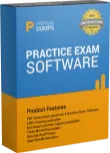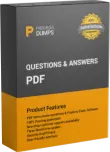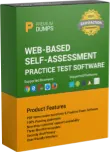
Get Google Professional-Cloud-DevOps-Engineer Exam Dumps
Google Professional Cloud DevOps Engineer Exam Dumps
This Bundle Pack includes Following 3 Formats
Test software
Practice Test
Answers (PDF)

Professional-Cloud-DevOps-Engineer Desktop Practice
Test Software
Total Questions : 166

Professional-Cloud-DevOps-Engineer Questions & Answers
(PDF)
Total Questions : 166

Professional-Cloud-DevOps-Engineer Web Based Self Assessment Practice Test
Following are some Professional-Cloud-DevOps-Engineer Exam Questions for Review
You deployed an application into a large Standard Google Kubernetes Engine (GKE) cluster. The application is stateless and multiple pods run at the same time. Your application receives inconsistent traffic. You need to ensure that the user experience remains consistent regardless of changes in traffic. and that the resource usage of the cluster is optimized.
What should you do?
Your uses Jenkins running on Google Cloud VM instances for CI/CD. You need to extend the functionality to use infrastructure as code automation by using Terraform. You must ensure that the Terraform Jenkins instance is authorized to create Google Cloud resources. You want to follow Google-recommended practices- What should you do?
Your CTO has asked you to implement a postmortem policy on every incident for internal use. You want to define what a good postmortem is to ensure that the policy is successful at your company. What should you do?
Choose 2 answers
A. Ensure that all postmortems include what caused the incident, identify the person or team responsible for causing the incident. and how to prevent a future occurrence of the incident.
You have an application that runs on Cloud Run. You want to use live production traffic to test a new version of the application while you let the quality assurance team perform manual testing. You want to limit the potential impact of any issues while testing the new version, and you must be able to roll back to a previous version of the application if needed. How should you deploy the new version?
Choose 2 answers
You need to introduce postmortems into your organization. You want to ensure that the postmortem process is well received. What should you do?
Choose 2 answers
Unlock All Features of Google Professional-Cloud-DevOps-Engineer Dumps Software
Types you want
pass percentage
(Hours: Minutes)
Practice test with
limited questions
Support